-
Sept 11 Sentinel Glider Tour
Posted on September 14th, 2018 No commentsA first tour of the Hurricane Sentinel Glider Fleet on Sept 11 as Florence was still approaching and a comparison to the operational models. Note that the data was transmitted over the GTS so it was available for assimilation in the models. All plots were prepared by Maria Aristizabal.
The first picket line is off Africa in the formation zone where the north-south extent is relatively narrow.
TWR Glider SILBO indicates the GOFS models are getting the surface layer quite well. All models miss the colder temperature layer near 100 m, but all are back in good agreement between 150 and 200 m.
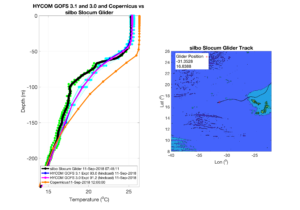
Second picket line. The Caribbean and Tropical Atlantic.
First is the station keeping Navy Glider NG300. GOFS models doing well, especially GOFS 3.1
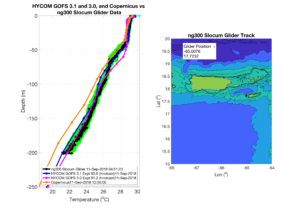
Next is the AOML Glider SG630 occupying the transect south of PR. All models agree well.
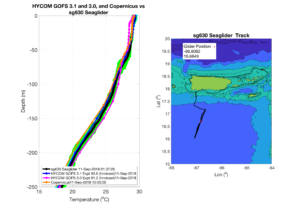
Then the third picket line protecting the US Mainland.
Gulf of Mexico first.
Navy Glider NG429 is in deepwater. GOFS models do well in deepwater.
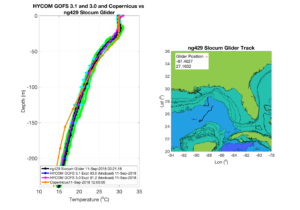
Navy Glider NG288 is on the outer shelf. Not only do GOFS models do well, GOFS 3.1 even matches some of the curves in the profile. Data assimilation might be doing very well here.
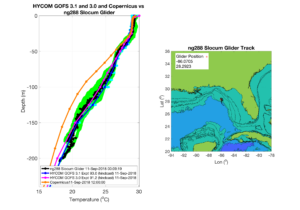
Now South Atlantic Bight
Skidaway Institute of Oceanography glider PELAGIA. We have told this story before. GOFS 3.0 is closest, but it might be for the wrong reasons. GOFS 3.1 is designed to have more vertical resolution in shallow water, and PELAGIA is definitely in shallow water.
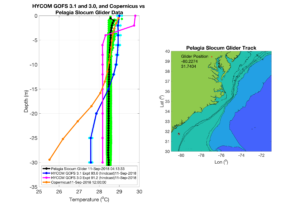
Into the Mid Atlantic Bight.
Here is RAMSES, the UNC glider operated by SIO for the NSF PEACH program. An early favorite in the reporting. Here is where GOFS 3.1 shines bright even in shallow water.
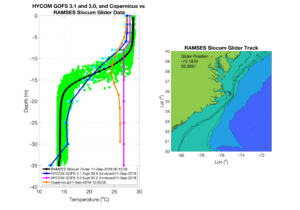
Moving north, we find Rutgers glider RU33 running along the shelf break. We are on the deeper side of the shelf. The Stratification Factor maps showed that both GOFS 3.0 and 3.1 were stratified on the outer shelf, and that is what this comparison demonstrates.
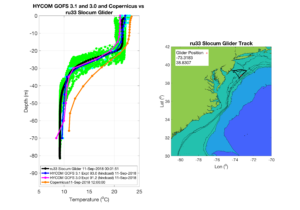
Continuing north to UMass Glider BLUE, we see a complicated structure at mid shelf that no model likes. Copernicus seems to lock onto the profile sooner, near 40 m.
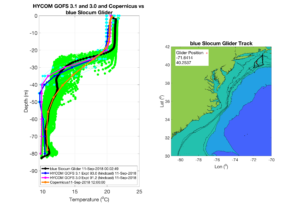
One final step north, we move on to the NSF OOI Coastal Pioneer Glider CP376. Another profile that no model seems to like, even with this glider in deepwater. Surface temperatures are off. GOFS 3.1 is good at getting the near surface variation. Copernicus is good at getting the deep variation.
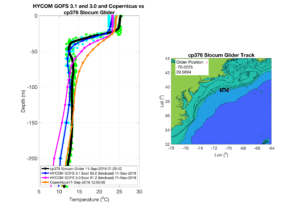
Last 5 posts by Scott Glenn
- Early Season in the Mid Atlantic - June 17th, 2021
- Disturbance in the Gulf - June 16th, 2021
- Hurricane Gliders 2021 - May 3rd, 2021
- Hurricane Iota - November 16th, 2020
- Hurricane Eta - Low Wind Shear, High SST - November 2nd, 2020



